Since ancient times people have admired animal qualities like the bear’s strength, the high-flying strength of the eagle, and the regal bearing of the lion. Indigenous people have used animals as totem symbols of protection for families, clans, and tribes. Animals have been part of the heralds of noble families. Today, they are popular symbols for schools, businesses, and sports teams. It is not surprising that the flags of modern countries feature animals that symbolize the qualities of their people. As you enjoy the examples below, think about what animal would best represent you, your family, and your culture.
Albania
Albania is a small country in the Balkans of Southeastern Europe. During World War II it was colonized by Italy, then became an isolated communist country during the Cold War. After the collapse of communism and the dissolution of Yugoslavia, Albania became a free country. It shares borders with other free countries: Montenegro, Kosovo, North Macedonia, and Greece.
The flag of Albania is a red field with a black double-headed eagle in the center. It is based on a medieval coat of arms that represented Albanian royalty in the Middle Ages. It was used in the country’s struggle for independence from the Ottoman Empire in the early 20th century. The double-headed eagle was a Byzantine symbol associated with the idea of the church and the state working together. To Albanians, the eagle has deep symbolism of pride, heroism, strength, resilience, and perseverance when faced with desperate challenges.
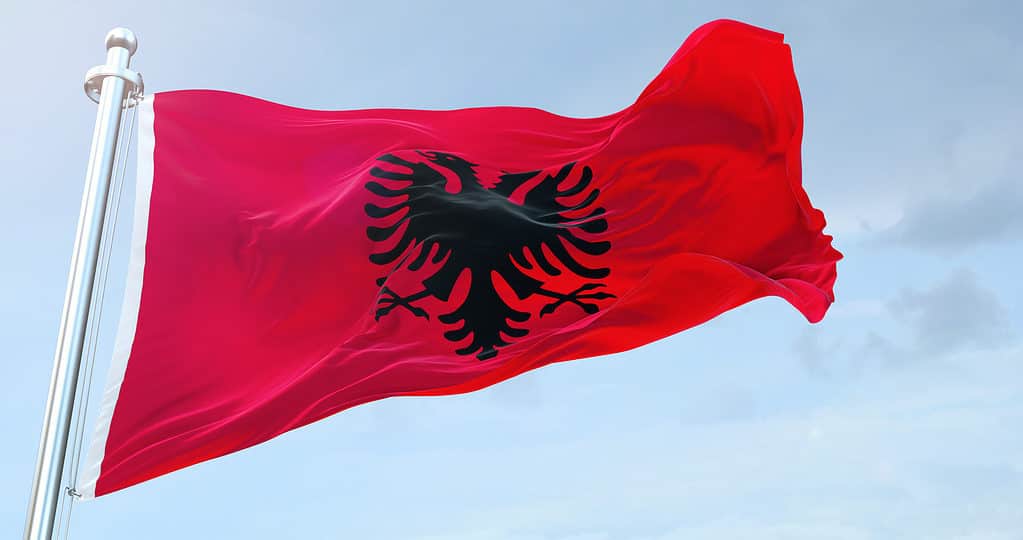
The featured animal on the Albanian flag is a double-headed eagle.
©iStock.com/EA
Andorra
Andorra is a small landlocked country in the Pyrenees Mountains, bordering Spain on one side and France on the other. Their flag is a yellow tricolor with vertical bands of blue, yellow, and red. The national coat of arms is in the center of the flag, in the yellow band. It includes the national motto in Latin: Virtus Unita Fortior (Strength United is Stronger). Because Andorra was historically co-ruled by French and Spanish aristocracy, its coat of arms combines elements from both countries. The two red cows represented in the coat of arms are emblems of the neighboring French region of Béarn.

The colors and symbols of the flag of Andorra were drawn from Spain and France, which historically co-ruled Andorra.
©Gil C/Shutterstock.com
Bolivia
Bolivia is a landlocked country at the heart of South America, bordering Argentina, Paraguay, Brazil, Peru, and Chile. It ranges from the jungle lowlands of the Amazon to the high peaks and plateaus of the Andes. The flag of Bolivia is a horizontal tricolor of red, yellow, and green. It includes the country’s coat of arms in the center. A mountain landscape includes two animals important to the country: the condor and the llama.
Condors are an Andean species that were important and revered symbols of the ancient Inca people. Incan territory included parts of Bolivia. Their descendants still make up a large percentage of the Bolivian population. They reflect the free spirit of the people and their respect for their cultural heritage. As for llamas, since ancient times they have been important livestock for meat, wool, and leather. They are used as pack animals to take heavy loads up and down steep terrain. Bolivia has over three million llamas and alpacas, the most of any country in the world. The llama is a fitting animal for the country’s national flag.
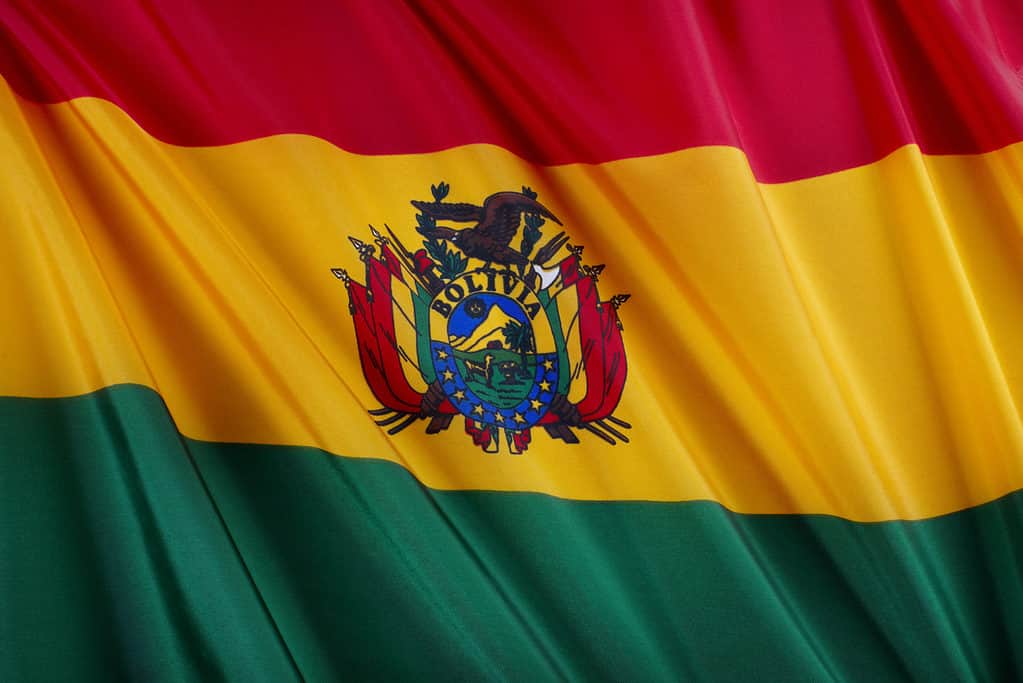
Bolivia’s coat of arms, represented on its flag, includes a condor and a llama, both important and common animals in Bolivia.
©Jim Barber/Shutterstock.com
Bhutan
Bhutan is a famously isolated country. It closed itself to the outside world for centuries but began to open up and modernize in limited ways starting in 1960. Coincidentally, it is also reputed to have one of the highest levels of happiness of any country in the world. High in the Himalayas between India and China, Bhutan reminds us of the mythological kingdom of Shangri-la.
Bhutan’s flag divides diagonally into yellow and orange triangles, representing the secular and Buddhist religious roots of the nation. The dominating feature of the flag is a white dragon. This is a popular symbol from Bhutanese mythology. It represents the sect of Buddhism predominant in Bhutan. In the local language Bhutan itself is called the “Dragon Kingdom.” This is an apt symbol for the country, its people, and its culture.

In the local language, Bhutan is called the “Dragon Kingdom,” so it is fitting that a white dragon takes the place of honor on its flag.
©Tatohra/Shutterstock.com
Croatia
Croatia’s flag is full of animals! Croatia is one of the countries that emerged from the dissolution of Yugoslavia in the 1990s. Its flag uses popular Pan-Slavic colors of red, white, and blue. The emblem in the center of the flag includes the crests of different regions of the country. Three of them include animals. These include crowned leopard heads in the crest of Dalmatia, a goat in the crest of Istria, and a marten in the crest of Slavonia. Incidentally, the word “marten” in the Croatian language is “kuna,” which is also the name for the country’s currency.
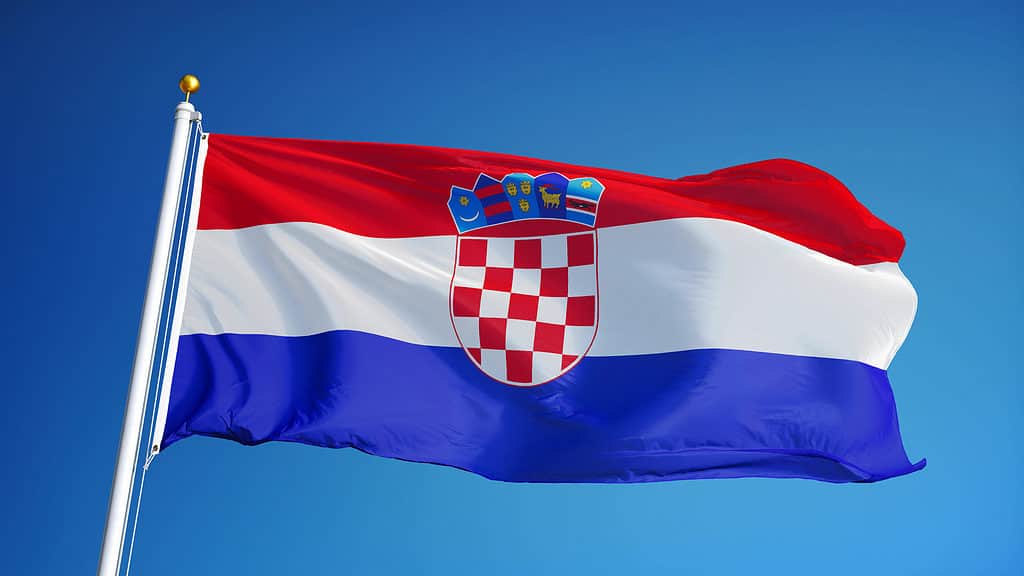
The flag of Croatia has three different kinds of animals on it.
©Railway fx/Shutterstock.com
Dominica
The central emblem in the flag of Dominica, a Caribbean island nation, features the sisserou parrot, the country’s national bird. It’s an endangered species with green and purple feathers, making Dominica’s flag one of the few in the world that uses the color purple as well as one of the few that raises awareness of an endangered species.
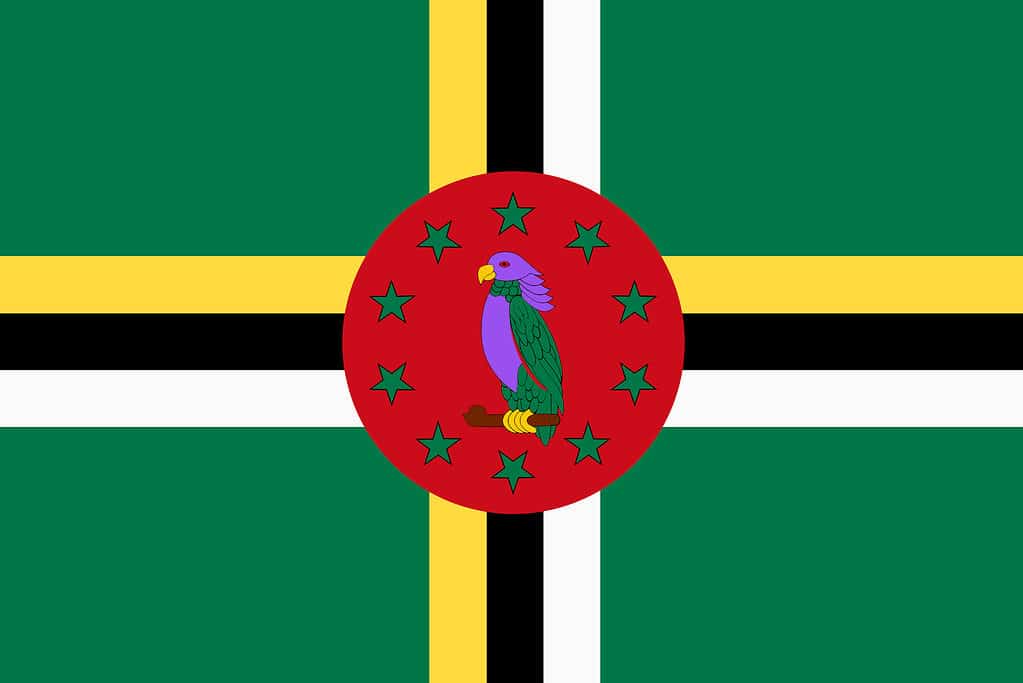
The flag of Dominica is one of the few in the world featuring an endangered species.
©iStock.com/Nigel Stripe
Ecuador
Ecuador, as the name suggests, is a country that sits on the equator in South America. Its terrain is mountainous and full of diverse wildlife, including the condor. Condors are a large bird species of thee Andes Mountains. The Incas, whose empire included the territory of what is today Ecuador and many other countries on the west coast of South America, highly honored them. Today, the condor is the Ecuadorian national bird and a prominent part of the national seal, which is on the country’s flag. Due to its size and the stories locals tell, it is a protector from attack. One can imagine it flying high over the mountains, scanning for danger from far away and protecting the people under its watchful eye.
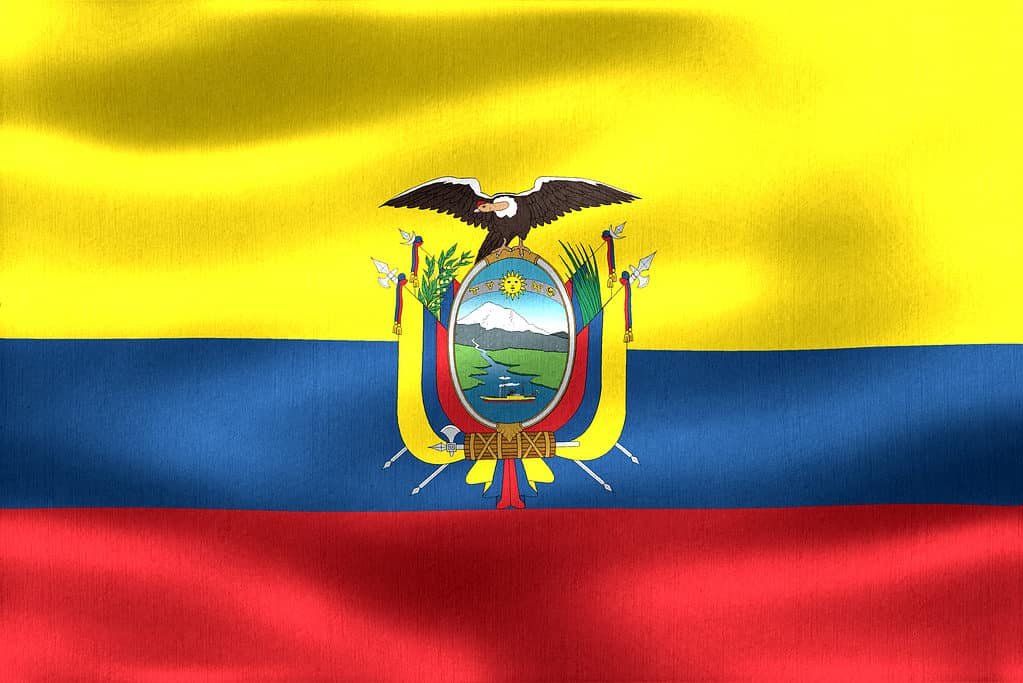
The Ecuadorian condor is a symbol of protection.
©MP_Foto/Shutterstock.com
Egypt
Egypt is one of the original cradles of human civilization. In the ancient world, it was the seat of powerful empires that created timeless cultural treasures, such as the Pyramids, the Sphinx, and a unique and beautiful system of hieroglyphic writing. Egypt’s modern flag includes the symbol of a golden eagle, known as the Eagle of Saladin. It is named for a famous Arab leader who helped united the people in resistance to European crusaders. The flag of modern Egypt uses colors popular in the flags of the Arab world: red, white, and black. Curiously, it does not include green, a color associated with Islam and one of the Pan-Arab colors.

The Eagle of Saladin is a symbol of Egyptian power.
©iStock.com/Anton Litvintsev
Fiji
Fiji is a Pacific island nation that has retained in its flag some symbols of its past as a colony of the British Empire. This is most obvious in the addition of the Union Jack, the British national flag, in the top left corner of Fiji’s flag. At the top of the national crest on the flag is a lion wearing a crown, a traditional British symbol of royal power. The rest of the shield represents three of the main agricultural products of Fiji: sugarcane, bananas, and coconuts, and also contains a white dove with an olive branch in its beak: a universal symbol of peace.

Fiji’s flag includes both a powerful lion and a dove of peace.
©MP_Foto/Shutterstock.com
Guatemala
The green, long-tailed bird featured in the center of the flag of Guatemala is a quetzal, a magnificent tropical bird native to Central America. Since ancient times quetzals have been admired and honored in mythology by indigenous peoples, and their feathers have been treasured as decorations. Today, the quetzal is the national bird of Guatemala, symbolizing the country’s liberty.

Guatemala honors the uniquely beautiful quetzal on its national flag.
©bodrumsurf/Shutterstock.com
Kazakhstan
Appropriately, the flag of Kazakhstan depicts an eagle flying in a sunny blue sky. It’s a fitting image that reminds the viewer of the vast sweeping steppes of the country under the expansive Central Asian sky. Since ancient times local people have used trained eagles as hunting birds. Various Kazakh tribes have traditionally flown flags with a golden eagle to symbolize their power. In modern Kazakhstan, the eagle represents freedom and taking off for the future. Since outsiders have dominated Kazakhstan for much of its history, including Russia and the Soviet Union, it treasures its independence today.

Eagles have been part of Kazakh life, and flags, from ancient times.
©iStock.com/imagoGY
Kiribati
The Pacific island nation of Kiribati has a flag that vividly depicts life in the islands. Below are rippling ocean waves and above is a setting sun in a red sky. Finally at the top of the flag is a frigatebird in flight. The frigatebird is symbolic of the country’s freedom, its ability to transcend the limitations of the sea, and the traditional dance patterns of the island people. Altogether, it’s an appealing image that will make you want to book your next vacation to this island paradise!

The frigatebird on the flag of Kiribati symbolizes the country’s freedom and ability to command the sea.
©iStock.com/Enrique Ramos Lopez
Malta
At first glance, the flag of Malta appears not to have any animals but look closer and you’ll see a rider on a horse inside the cross emblem at the top left. This is a traditional emblem of St. George killing a dragon. Altogether, the cross and design depict the George Cross, an award given to Malta in the 1940s by King George VI of Britain to honor Malta for its outstanding bravery during World War II. The island of Malta is strategically located in the center of the Mediterranean Sea between Italy and North Africa. Control of it was an important objective of both sides during the war.

The flag of Malta includes an award given to the country by the King of England for valor during World War II.
©Anna Marin N/Shutterstock.com
Mexico
Mexico’s flag includes two animals that are not getting along with one another at all! According to legend, the Aztecs received a sign from the gods about where they should build their capital city, Tenochtitlan (today Mexico City). And that sign was an eagle standing on a cactus while eating a snake. This tough image became the Aztec symbol for the city, and later a part of the Mexican coat of arms and its flag.
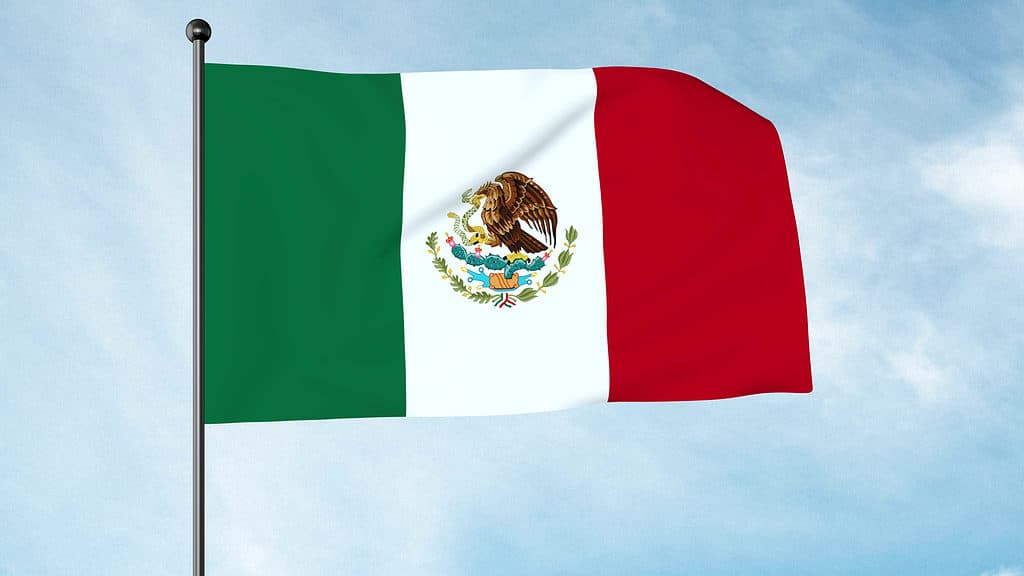
The eagle and its unfortunate snake lunch on the Mexican flag are ancient symbols of Mexico City and its Aztec predecessor.
©Saurabh797/Shutterstock.com
Moldova
The flag of Moldova is similar to that of neighboring Romania, with which it shares historical and cultural connections. Two animals lie in the center of the Moldovan coat of arms: an eagle and an aurochs, an ancient cattle species. The eagle is holding an Orthodox Christian cross in its beak honoring the predominant religious affiliation of the country. The eagle holds an olive branch in its claws, signifying peace. The aurochs head in the coat of arms is a traditional symbol of Moldova.

Moldova’s flag is similar to that of neighboring Romania, with which it shares historical and cultural ties.
©Tatohra/Shutterstock.com
Montenegro
Montenegro was a part of Yugoslavia but today is an independent country. The flag of Montenegro has an impressive symbol: a double-headed eagle wearing a shield with a lion on it. The two-headed eagle traces back to Byzantine times. It shows that Montenegro was historically part of the Byzantine Empire. In Byzantium, the double-headed eagle represents the close cooperation between the Orthodox church and the government. The lion on the shield is a traditional symbol of power, royalty, and authority.
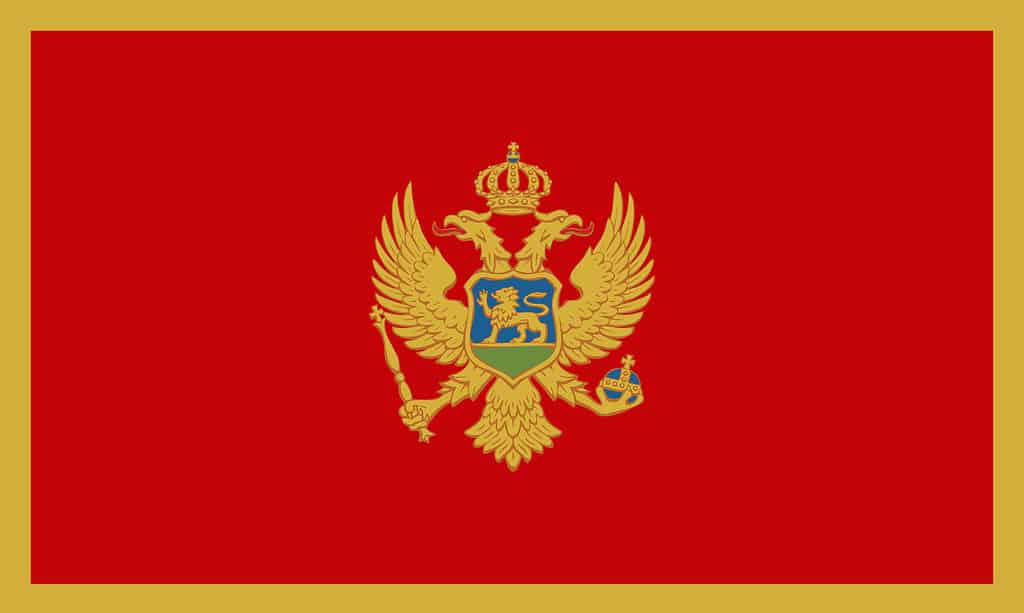
The flag of Montenegro marks the country’s historic association with the Byzantine Empire.
©iStock.com/Juan Ignacio Rodríguez Moronta
Papua New Guinea
Papua New Guinea is a tropical island country. It occupies the eastern half of a large island shared with Indonesia. The flag of PNG includes a yellow image of a bird of paradise, a beautiful indigenous species. The bird is depicted flying away to freedom, much as the country itself won its independence and now pursues its own future. On the other half of the flag is the Southern Cross, a constellation easily visible from the Southern Hemisphere. By using this symbol, Papua New Guinea shows solidarity with Australia, New Zealand, and other South Pacific countries.

A bird of paradise in flight represents Papua New Guinea’s birth as a new nation and flight to freedom.
©N. Vector Design/Shutterstock.com
Peru
In Peru’s national flag, you’ll notice a coat of arms with an incredibly charming animal in the top left corner. Is it a llama? Is it an alpaca? No, it’s a vicuña, a free-roaming relative of both of those species and of camels that roams freely in Peru. To Peruvians, it represents freedom, national pride, and heroism. If it’s hard to imagine this animal as a heroic figure, just imagine some of the narrow trails and ledges these sure-footed creatures navigate in the high Andes.

The state flag of Peru with a coat of arms in the center was the former national flag.
©oxameel/Shutterstock.com
Serbia
Serbia’s flag includes a double-headed eagle, which is a common symbol not only in Serbia but in many countries influenced by the Eastern Orthodox church. This is a symbol dating back to the days of the Byzantine Empire. It represents the church and the state working together as one entity. While this kind of merger of church and state is not characteristic of modern Serbia, using the symbol shows respect for both institutions and the country’s cultural heritage.
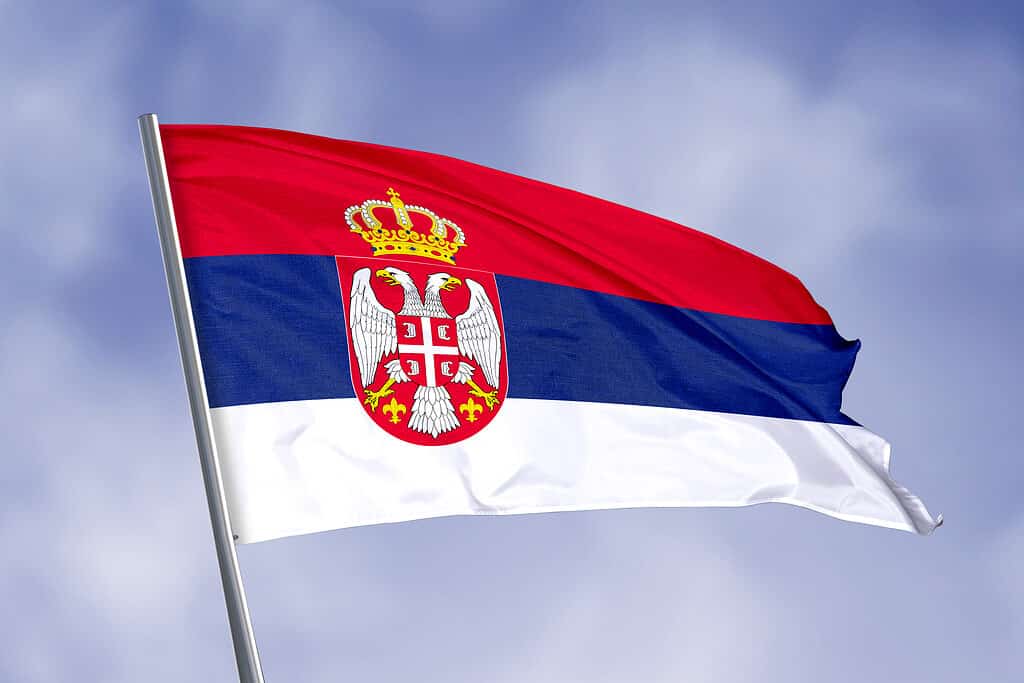
Serbia’s flag includes the double-headed eagle emblem that is popular in countries influenced by Eastern Orthodox Christianity.
©tatohra/Shutterstock.com
Spain
The flag of Spain includes a coat of arms that indicates the country’s form of government: a constitutional monarchy. The crown, and a lion wearing a crown, represents royalty. Lions are traditional symbols of strength, authority, and royalty. In Christian countries, the lion also evokes Jesus Christ, who writers of the Bible described as the “Lion of Judah.”
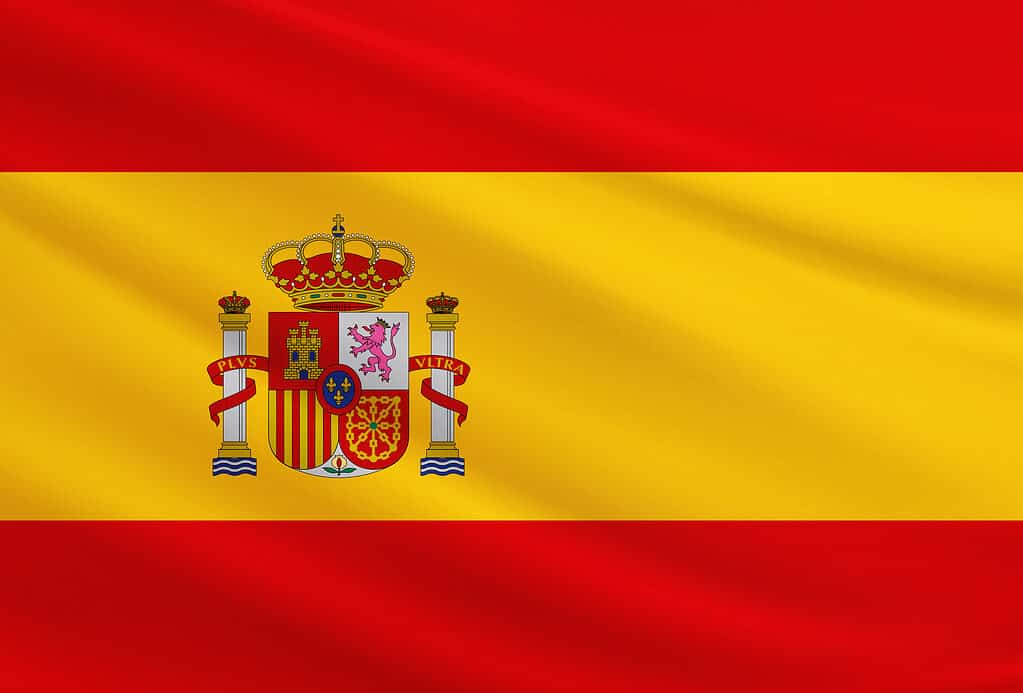
The Spanish flag proclaims the country’s constitutional monarchy.
©Osman Bugra Nuvasil/Shutterstock.com
Sri Lanka
Sri Lanka is an island nation off the southern coast of India in the Indian Ocean. The colors of the flag represent the country’s different ethnoreligious minorities and the lion is a symbol of the courage of the Sinhalese people. During colonial days this country was called “Ceylon” and was valued as a source of tea, spices, and other resources that could not be cultivated in Europe.
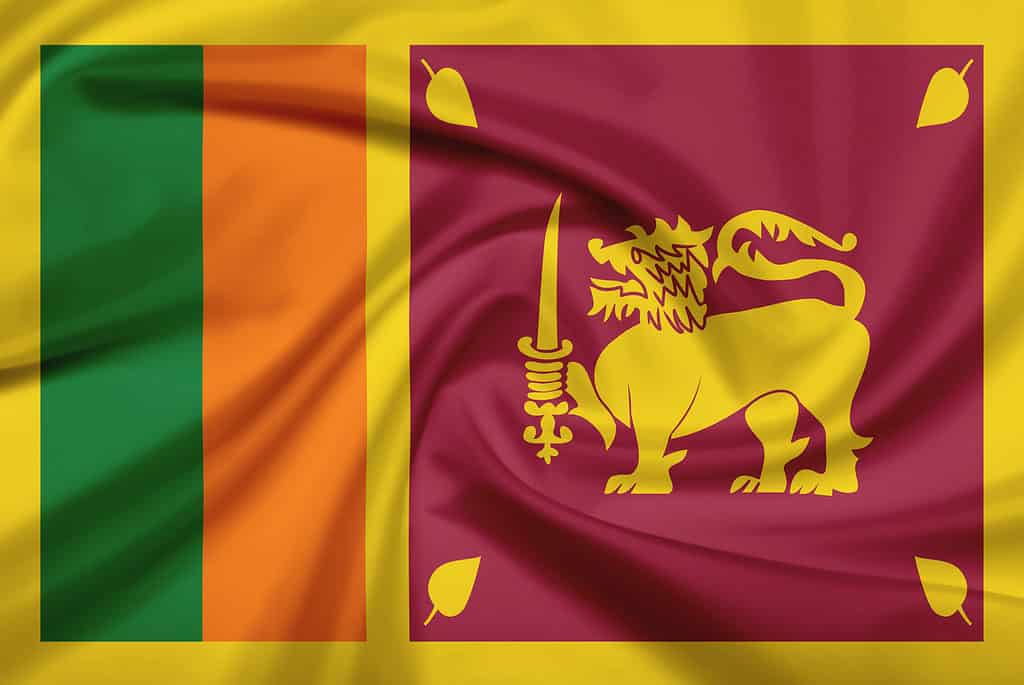
The Sri Lankan flag features an intense lion representing the fierce courage of the Sinhalese people.
©Pixfiction/Shutterstock.com
Uganda
Uganda is an East African country, formerly a part of the British empire. It has a great deal of iconic wildlife, but of all the possibilities of animals to feature on its flag, the country has chosen a grey-crowned crane, which has been noted as a gentle and peaceful bird. Notice that one leg of the crane is raised. This is meant to show that the country is not stuck in place, but is moving forward into a better future.
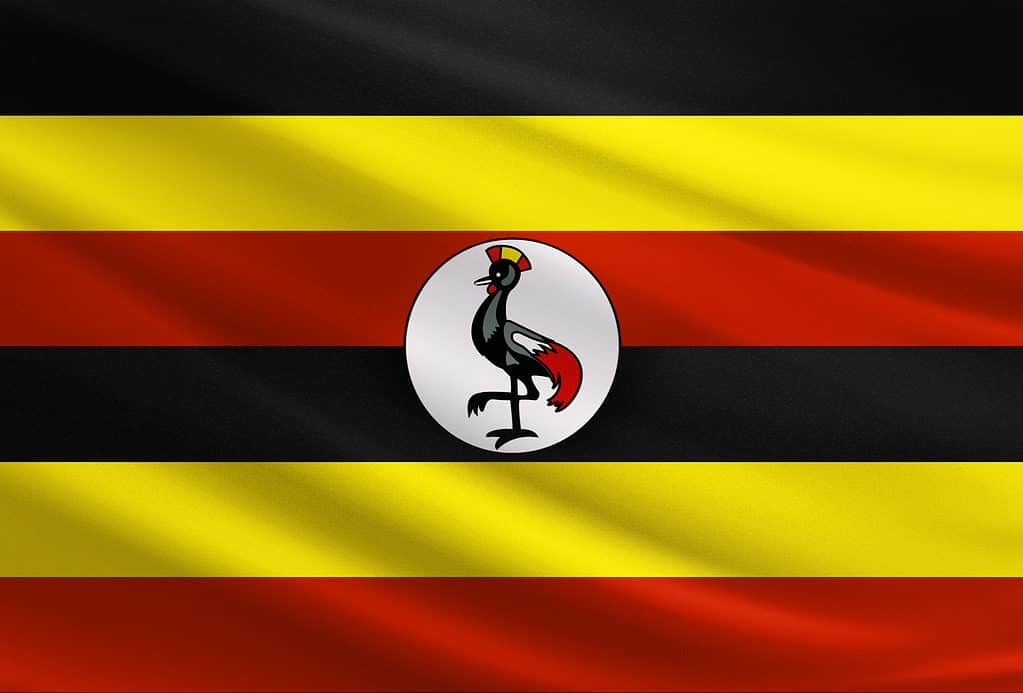
A gentle, peaceful grey crane represents Uganda’s path to the future.
©Osman Bugra Nuvasil/Shutterstock.com
Zambia
Zambia is a former British colony located in south-central Africa. The bird on its flag is an African fish eagle. Notice that it’s in flight. This is important because it graphically illustrates that Zambia is a free country with the ability to soar above all its problems. Thus, it is an empowering and hopeful symbol.
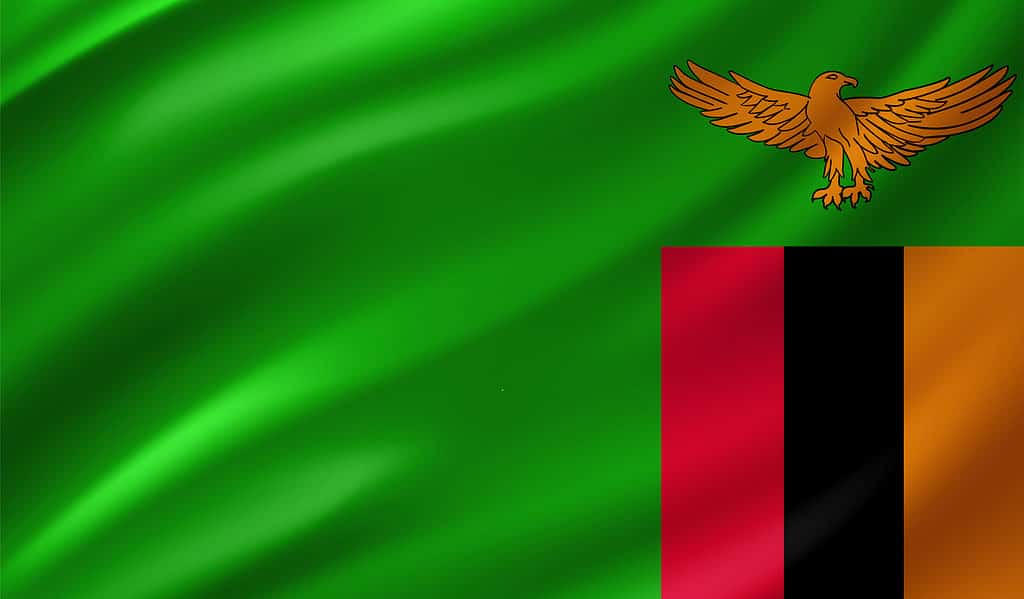
Zambia’s freedom and resilience are represented by an African fish eagle.
©iStock.com/nanami_o
Zimbabwe
Zimbabwe is a country in southern Africa that was a great kingdom in the past called Great Zimbabwe. Artifacts found in archaeological digs there show that Great Zimbabwe traded with countries as far away as China. One of the artifacts found there was a stone bird known as either the Zimbabwe Bird or the Bird of God. It has become a symbol of the country and is featured on the flag of Zimbabwe to honor the nation’s long history.

the Zimbabwe Bird has become a symbol of the country and is featured on the flag of Zimbabwe.
©Aleksandar Mijatovic/Shutterstock.com
Curious about more flags? Click here to learn about every single flag in the world! – Every Flag in the World: Photos, History, and More
The photo featured at the top of this post is © iStock.com/Juan Ignacio Rodríguez Moronta
Thank you for reading! Have some feedback for us? Contact the AZ Animals editorial team.






